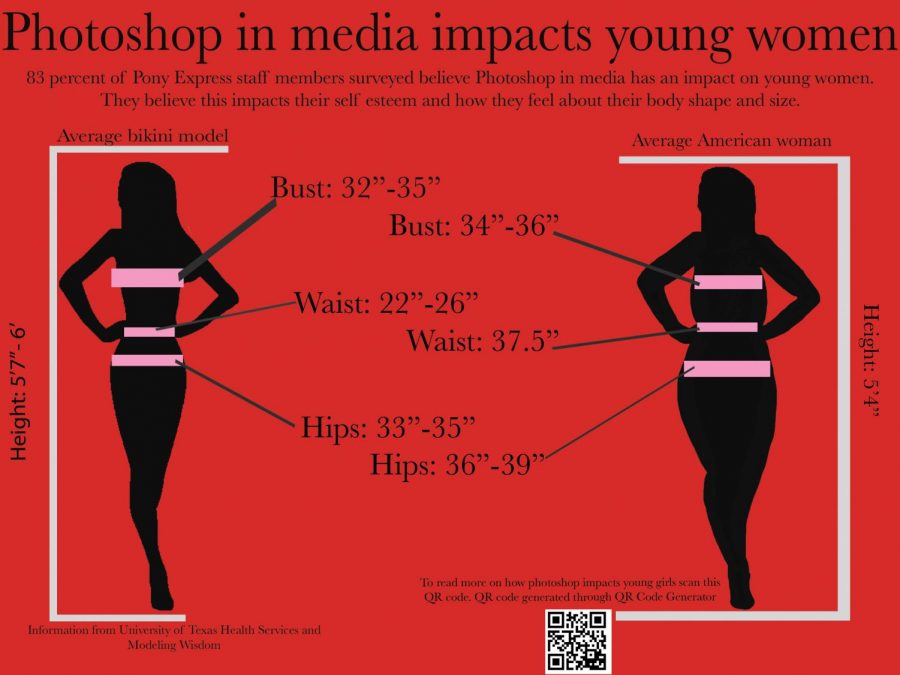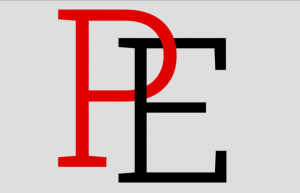Staff Editorial: Photoshop affects body image
December 1, 2017
Media outlets and advertisers who use Photoshop to alter images of women causes harm among viewers and readers. With teenagers having more access to the internet, it creates the perception that everyone has to be a certain shape and size to be “good enough” and Photoshop within the “media culture” is only amplifying this negative thinking.
With increased access to the internet at a younger age, this promotes the idea that everyone should be skinny but curvy at the same time. Be it through computers, phones, and other devices used to access social media, younger and younger girls are facing the pressures of body image and the insecurities that arise. Thirteen year-olds are stepping out in full faces of makeup and crop tops, because of these ideals of women perpetuated by a photoshopped media.
The altering of images in the modeling industry plays a major role in the overall idea that women have to look the same as everyone in a magazine or on the internet. Often, magazines market articles saying that they will teach the reader how to work out to look like a Victoria’s Secret Angel. However, by saying that this look is achievable to the masses, when in actuality, many models simply are born with that body type, it increases insecurities in women who may not have been born with that body shape, especially when many of the women who they are aspiring to be have been photoshopped.
Teenage girls are looking at models in the industry and getting the idea that they have to weigh a certain amount or look a certain way to fit in. When media outlets alter images or publish pictures from different photoshoots, such as those from Victoria’s Secret, it creates insecurities in young women.
Altering of images can lead to problems like eating disorders. A study on medicalnewstoday.com, explains 20-40 percent of models in the industry are facing an eating disorder. Anorexia is the most known eating disorder however, bulimia is the most common in models. Although not all women who look at altered images or super-thin models develop an eating disorder, it does create questions about various other impacts of images on readers and viewers.
There are ways companies around the world that are trying to fix this problem. France has put a minimum weight limit on models; AERIE and Dove are promoting plus sizes. This encourages both the idea that all sizes are beautiful and that Photoshopping women, as combatted in the Aerie Real campaign, is unnecessary. By beginning to introduce diversity in sizes, women are more readily able to see themselves in a position of societal beauty, helping to combat the insecurities due to the previous modelling standards.
In modeling, there seems to be an increase in plus size models and size 0 as well. There are not as many size 5 or size 6 models. While the majority of women are plus size, it causes an awkward in-between stage where the extremes are shown and many young girls who aren’t a size 2, but aren’t at plus sizes yet aren’t necessrily seeing themselves represented. The encouragement of plus sizes is important, but the most prominent victims, teen girls, still aren’t necessarily seeing themselves represented.
The media industry and models should make it clear that teenage girls should not have any expectations of themselves to look like models or change themselves to be a certain shape or size.













Michael VanLieshout • Dec 18, 2017 at 7:54 am
This is so true. I work at Jos. A Banks and almost every wedding I have to set up brings in a picture from Pintrest and they get an image in their heads about how their grooms and groomsmen need to look just like the Pintrest models who are photshopped and pinned up in the back. Photoshop for sure sets unrealistic standards of beauty.
Gabrielle Danielson • Dec 8, 2017 at 9:16 am
I am glad someone wrote about this issue because it is a huge problem today. Today there are lots of teen girls who feel insecure about their bodies and when magazines edit photos of models to make them look thinner it does not help teen girls feel any better. It also makes some of the models angry because they then feel like they are not good enough and are being portrayed in a way that they are not. I liked that this article talked about Victoria Secret models too because many young teens want to be like them and its good for them to know that not everyone is like that. I also liked that this article touched on how the modeling industry is expanding and they are having more diverse models as well as an increase in plus size models.